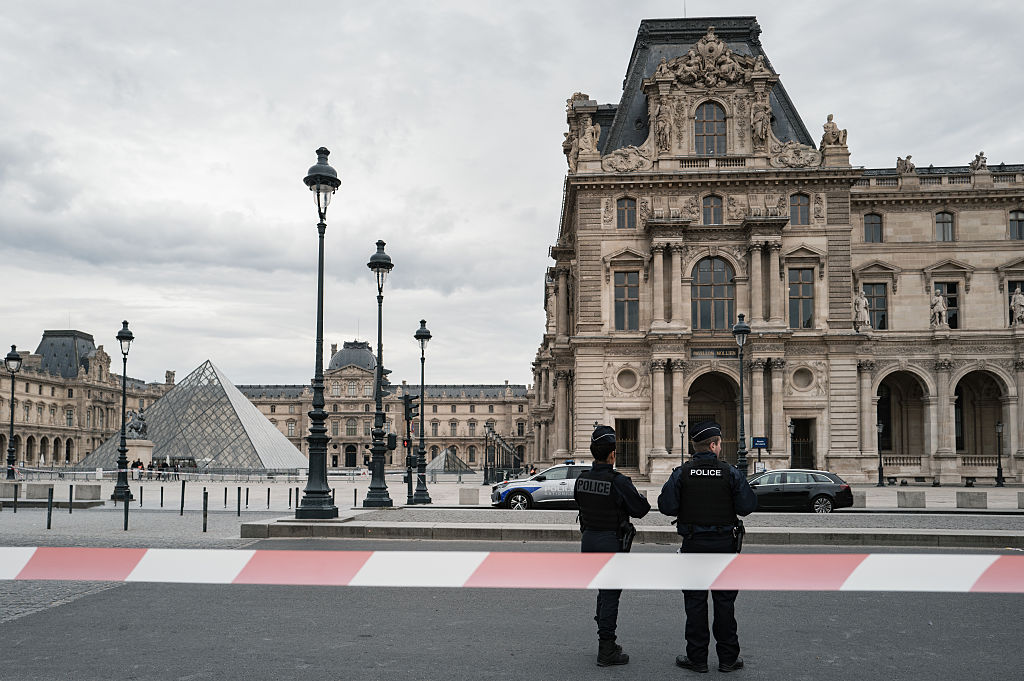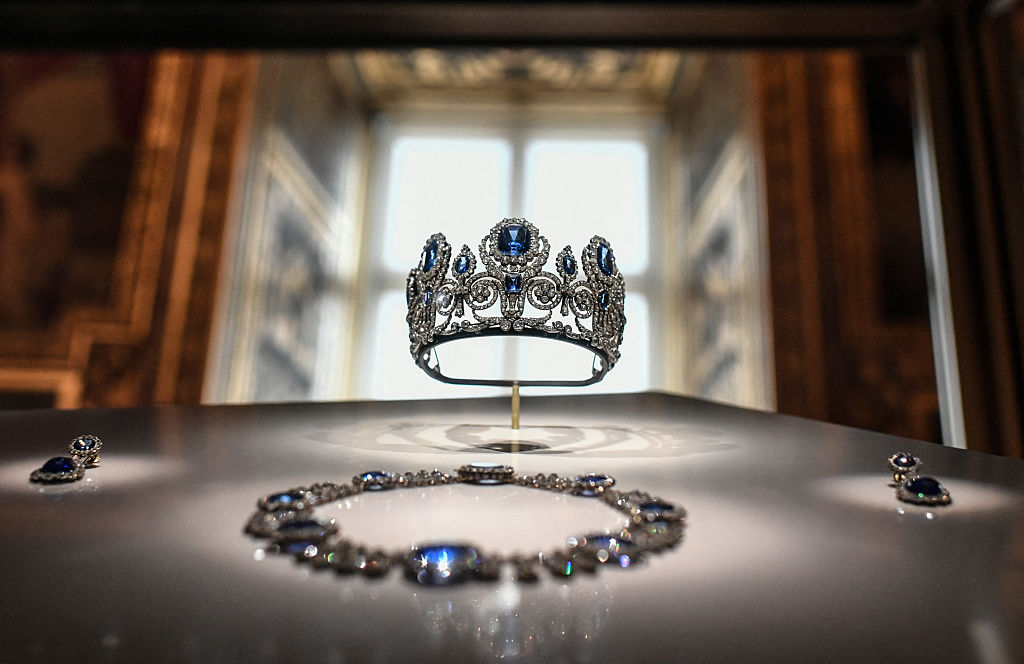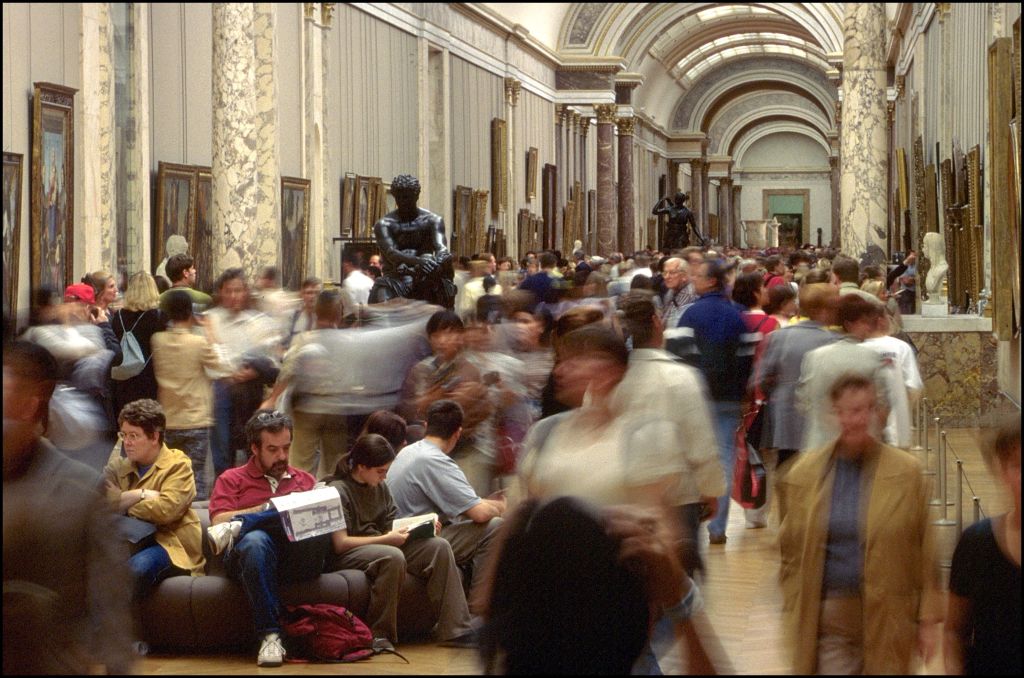
In a story that feels more like a movie than real life, 8 pieces of historical French royal jewelry were stolen in a daytime heist at the Louvre on Sunday morning.
In a robbery that lasted less than 7 minutes, the perpetrators used a basket lift to scale the façade, before forcing open a window and breaking display cases that housed the priceless artifacts, shocking people across France.
How can they ride a lift to a window and take jewels in the middle of the day?
The thieves then escaped via motorcycle, but not before unsuccessfully trying to set fire to the basket lift they used to gain entry to the building.
What we know
Shortly after the Louvre opening on Sunday morning, a basket lift was parked along the Seine-facing wall of the Louvre.
At 9:30AM, a window was forced in by ‘several’ individuals, using a disc cutter to cut open panes.
Once inside, thieves targeted the Apollon Gallery, where the Crown Jewels, and the royal collection is held. The interlopers smashed multiple display cases, grabbing the priceless artifacts.
Once the cases were smashed, security was notified via alarm and the intruders fled via motorcycle. There was attempt to set fire to the basket lift used, but it was prevented by a staff member. One thief did leave behind a reflective vest, and the group left behind some of the equipment utilized.
“What is certain is that we have failed, since people were able to park a furniture hoist in the middle of Paris, get people up it in several minutes to grab priceless jewels, giving France a terrible image,”
The entire heist was completed in less than 7 minutes, according to officials, making an impressive-enough heist for Hollywood to call back George Clooney.
What was taken

According to officials, the thieves targeted 9 items but only escaped with 8. According to Frances cultural minister, these items remain missing:
- The Tiara from the jewelry set of Queen Marie-Amélie and Queen Hortense.
- The necklace from the sapphire jewelry set of Queen Marie-Amélie and Queen Hortense.
- An earring, part of a pair from the sapphire jewelry set of Queen Marie-Amélie and Queen Hortense.
- A brooch known as the reliquary brooch.
- The Tiara of Empress Eugénie.
- The Large bodice knot (brooch) of Empress Eugénie.
- Emerald necklace from the Marie-Louise set.
- Pair of emerald earrings from the Marie-Louise set.
One item was recovered inside of the building, the crown of Napoleon III’s wife, Empress Eugénie, apparently worth tens of million of Euros.
“It’s worth several tens of millions of euros — just this crown. And it’s not, in my opinion, the most important item,” the Drouot auction house president Alexandre Giquello told Reuters.
According to Paris prosecutor Laure Beccuau, she was surprised that the Regent diamond was not targeted, a jewel valued at over 60 million Euro.
Overworked and understaffed

The incident is a realization of a larger issue facing the Louvre: an increase of tourism paired with staffing shortages. In June, staff engaged in a walkout to protest what they described as overcrowding and chronic understaffing. The walkout resulted in the Louvre delaying its opening that day.
Unions claim that overcrowding results in too few eyes on too many rooms, and that clashing routes between guests, construction personnel, and freight employees leave gaping holes in the Louvres security. The Louvre sees almost 9 million guests each year.
France’s justice minister made no excuses for the failings of security, stating to France Inter radio that “What is certain is that we have failed, since people were able to park a furniture hoist in the middle of Paris, get people up it in several minutes to grab priceless jewels, giving France a terrible image,”
According to police, the thieves were unarmed but threatened at least one staff member with an angle grinder.
Recovery may be difficult
According to multiple experts, there is little to no chance of recovering these treasures. The most likely fate for these historical items will be a cutting, reshaping, and reselling as raw stones and gold.
This is not the first time a successful heist has been managed at the Louvre. The Mona Lisa was famously stolen in 1911 by an Italian decorator who worked at the museum.
Sunday’s heist was the first in the 21st century, with the last coming in 1998, when a painting by Camille Corot was successfully taken and not recovered.